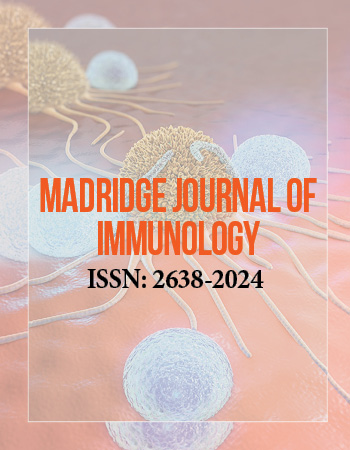International Conference on Immunology and Immunotechnology
November 1-3, 2017 Barcelona, Spain
Air Pollution Particulate Matter Exposure Up-Regulates the Expression of CD206 and TNF-α Production in Monocytes during in vitro Differentiation into Macrophages
1Department of Microbiology, National Institute of Respiratory Diseases, Mexico
2Department of Environmental and Occupational Health, Rutgers School of Public Health, USA
3Office for Global Public Health Affairs, Rutgers School of Public Health, USA
Introduction: Alveolar macrophages play a central role in the protective immune response to respiratory infections and are the first line cellular responders to inhaled particulate matter (PM) and microbial pathogens. Monocytes are recruited from blood during inflammation and then mature into alveolar macrophages. Mechanisms by which PM modulate innate responses of macrophages are not understood.
Objectives: To examine the effects of PM exposure on human monocytes during in vitro differentiation into macrophages and assessphagocytosis of PM, expression of cell-surface molecules and TNFα production.
Methods: Peripheral blood was obtained from healthy adult volunteers (n=10). Monocytes were isolated from peripheral blood mononuclear cells by plastic adherence and positive immunomagnetic selection and exposed to PM during in vitro differentiation into macrophages for seven days. Cell morphology, proportions of cells containing PM and TNF-α production were assessed by microscopy, flow cytometry for cell-surface expression of CD14, CD16, CD33, CD36, CD163, CD206 and CD209 and ELISA, respectively. Ambient PM2.5(aerodynamic diameters <2.5µm) for in vitro exposure studies, were collected with high-volume PM2.5 samplers (GMW Model 1200, VFC HVPM10, airflow rate 1.13m3/min) at the National Center for Environmental Research and Training (CENICA, Mexico City).
Results: Monocytes exposed to PM during their in vitro differentiation exhibited a round morphology, while unexposed monocytes showed a non-rounded morphology and were elongated. The proportion of cells containing PM increased according to the concentration of PM with the highest proportion of cells containing PM being 22% (15-32, 10mg/mL). Exposure to 1, 5 and 10mg/ml of PM did not show significant changes to the cell-surface expression of CD14, CD16, CD163 and CD33. Although exposure to 1, 5 and 10mg/ml of PM did not significantly alter the expression of CD36 a trend to a decrease in proportion of cells expressing CD36 was observed when PM concentrations were increased. The expression of CD206 was significantly increased in cells exposed to 10mg /mL of PM (p<0.005). In addition, exposure to 10mg /mL of PM induced significant production of TNF-α in comparison to non-exposed cells (p<0.005).
Conclusions: In vitro exposure to PM enhanced the expression of CD206 and production of TNFα during macrophage differentiation. Our data support the hypothesis that PM affects the differentiation of monocytes to macrophages and modify macrophage function.


